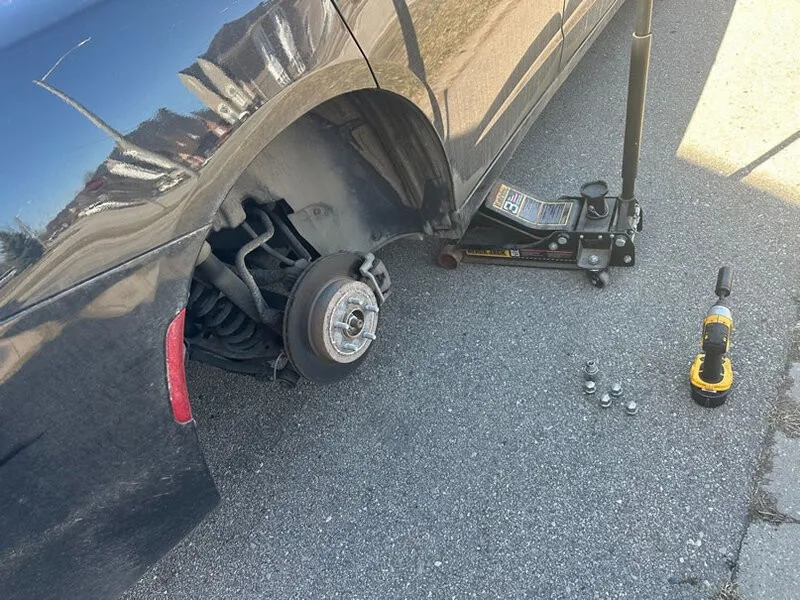Simple Tips to Increase the Life of Your Brakes
April 15, 2025It's spring time and you are going to put your summer tires on. While doing so you will have access to the brakes, here are few simple things you can and should do :
:
-
1. Inspect Brake Pads and Rotors
Check the thickness of your brake pads. If they are wearing thin, it's time to replace them. Look for grooves or scoring on the rotors, which can affect performance. Clean off any visible rust or debris buildup.
-
2. Keep Brake Components Clean
Use brake cleaner to remove dust, dirt, and road grime. Avoid using water or general cleaners, which can damage sensitive parts. Clean brakes function more smoothly and last longer.
-
3. Drive Smoothly and Avoid Sudden Braking
Aggressive braking wears down pads and rotors faster. Anticipate traffic flow, use engine braking where appropriate, and keep a safe distance to reduce hard stops.
-
4. Avoid Riding the Brakes
Resting your foot on the brake pedal or gently applying it downhill may feel safe, but it creates constant friction. Use engine braking or downshift instead on long descents.
-
5. Flush Brake Fluid Periodically
Brake fluid absorbs moisture over time, reducing braking efficiency and causing corrosion. Check the manual, but generally fluid should be flushed every 2–3 years.
-
6. Use Quality Brake Components
Opt for OEM (Original Equipment Manufacturer) or high-quality aftermarket pads and rotors. Cheaper parts wear out quicker and can affect performance, costing more in the long run.
-
7. Pay Attention to Warning Signs
If you hear squeaking, grinding, or feel vibrations while braking, it's time for a checkup. Ignoring early signs of wear or damage can cause more serious issues.
-
8. Don’t Overload Your Vehicle
Carrying heavy loads increases brake strain. Unload unnecessary items and avoid towing more than your vehicle’s rated capacity unless necessary.
-
9. Check Calipers and Brake Lines
During seasonal tire changes, look for leaks, cracks, or stiffness in the brake lines and inspect calipers for proper function. A sticky caliper can wear out one side faster than the other.
-
10. Keep Tires Properly Inflated
Underinflated tires increase rolling resistance and put more strain on the brake system. Check tire pressure regularly and maintain it as recommended.
-
11. Rotate Tires Regularly
Rotating your tires helps even out wear, which contributes to better overall balance and braking performance. Follow your vehicle’s suggested rotation schedule.
-
12. Use Parking Brake Regularly
Engaging your parking brake helps keep rear brake components active, preventing them from seizing due to inactivity—especially important for vehicles with drum rear brakes.
-
13. Avoid Driving Through Deep Water
Water can get into the brake system, reducing effectiveness temporarily and contributing to long-term corrosion. If you do drive through water, gently apply brakes afterward to dry them off.
-
14. Monitor Brake Pedal Feel
If the pedal feels soft, spongy, or sinks to the floor, this could indicate air in the lines or a leak. Don’t wait—have it checked right away.
-
15. Store the Vehicle Properly
If the car will be sitting for a long time, avoid parking with the handbrake engaged. Use wheel chocks instead, and consider a brake cover spray to reduce rust buildup.
Brakes are one of the most critical safety systems on your vehicle. With a little seasonal care and mindful driving habits, you can help your brake components last longer and perform better when it matters most. Regular inspections and small preventative steps can go a long way in saving you money and avoiding surprise repairs.


